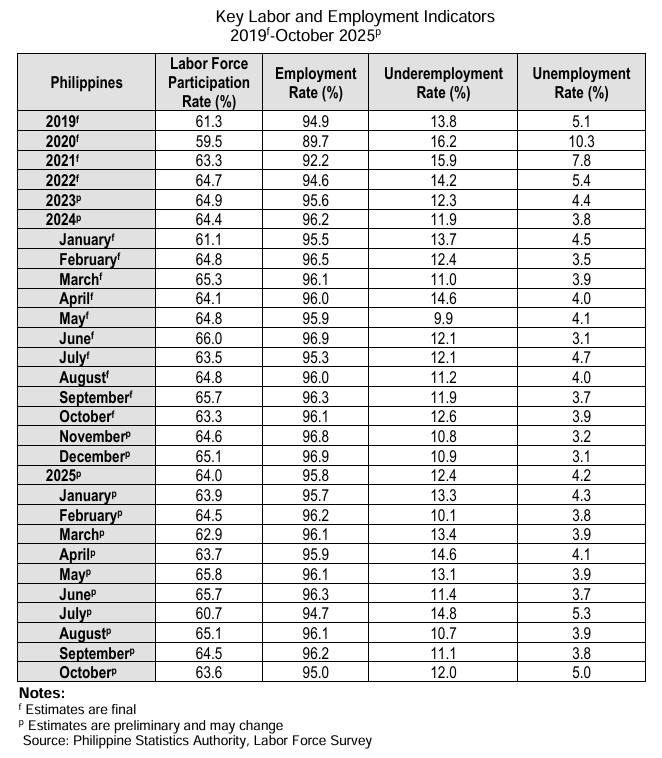- Ziggurat Realestatecorp

- 19 hours ago
- 1 min read
The number of jobless Filipinos surged in October, the Philippine Statistics Authority (PSA) reported on Wednesday, with rates hitting a three-month high.
The country’s unemployment rate was recorded at 5.0 percent, markedly up from 3.8 percent and 3.9 percent a year earlier.. This is the highest unemployment rate since July of this year at 5.3 percent.

This translates to 2.54 million unemployed Filipinos, higher than the 1.96 million recorded in September 2025 and 1.97 million in the same month last year.
Meanwhile, underemployment — which counts as those looking for more work or an extra job — rose to 12.0 percent, up from 11.1 percent last month. It is, however, lower than year-earlier 12.6 percent.
The number of underemployed individuals stood at 5.81 million. These are workers who expressed a desire for additional hours in their current job, an additional job, or a new job with longer hours.
Employment rate, meanwhile, recorded a downtick of 95.0 percent, down from 96.2 percent recorded a month earlier and 96.1 percent a year earlier. The number of individuals with jobs reached 48.62 million.
The country’s Labor Force Participation Rate (LFPR) in October was registered at 63.6, lower than the 64.5 percent a month earlier but slightly higher than the 63.3 percent recorded a year earlier.
Source: Manila Times



